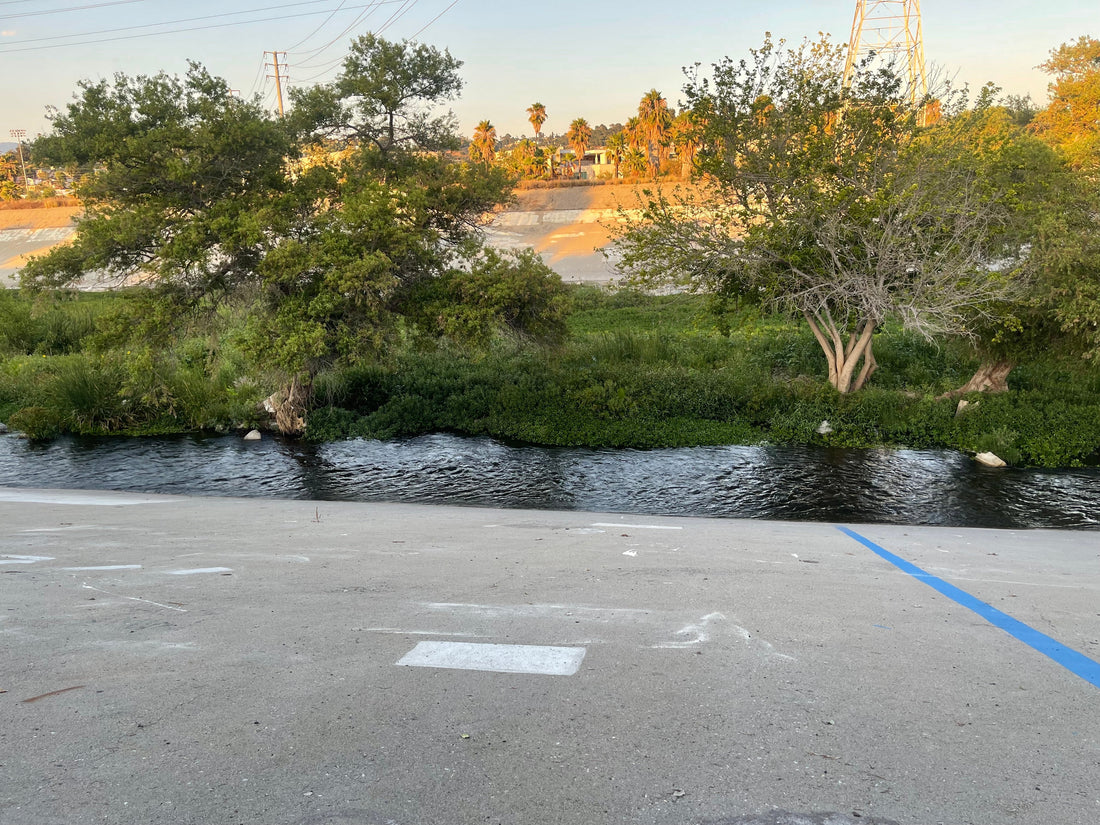Bridging Science and Community: Reflections from a Nighttime Nature Walk
Pelagic ProblemsThis past week, I joined a local community cleanup and nighttime ecology walk. These experiences grounded me in more than just soil. It reminded me of the healing power of community, especially when it’s diverse, intentional, and tied to place.
As someone rooted in conservation science, I often navigate the world through data, environmental modeling, and policy. But volunteering on the ground offers something data can’t: presence. Every cigarette butt picked up, every rustling tree branch, every night insect call becomes part of an intimate dialogue with the land. It reminds me why we do this work not just to protect the planet, but to reconnect with each other and ourselves.

[An image of the Los Angeles River bike path.]
That evening, I met four incredible women of color (fellow nature lovers) who welcomed me into their group. It’s rare and beautiful to find other POC in environmental spaces, especially outside academic or nonprofit settings. With them, I found solidarity, joy, and a shared commitment to healing both the land and our inherited wounds. We exchanged stories, reflections, and plans for future hikes and cleanups. Suddenly, this wasn’t just a volunteer event. It was the beginning of something deeper.
During the walk, we stopped to taste fresh elderberries growing trailside. I popped one into my mouth (cobweb and all!). The berry disintegrated easily, releasing a gentle, light flavor that reminded me of melon. It was a small, sensory moment that deepened my awareness of the edible landscape around us, of the relationships between species, and of how little we truly pause to taste the land we move through.

[An image of a brown skin woman's hand holding a small cluster of pale blue elderberries against the pavement.]
Later, we stood beneath the soft sway of a willow tree. Our guide shared that the willow’s leaves were used medicinally by the Gabrielino/Tongva people, whose ancestral homeland includes the area now known as Olvera Street in Los Angeles. They would press the leaves to their temples to relieve migraines. Today, we derive aspirin from the same plant family, a testament to how Indigenous knowledge continues to inform and shape modern science, often without proper recognition.
A few days earlier, during a separate community trash walk in North Hollywood, I had a conversation with another volunteer that stuck with me. We traded thoughts on food, language, and ecology. At one point, he described the taste of fried crickets as “beef jerky if you close your eyes,” and I laughed. Crickets, I reminded him, are both a culinary tradition and environmental indicators for many ecosystems. It's in these moments when culture and science dance together that makes me feel most alive.
Community cleanups are often seen as feel-good projects, but they’re more than that. They’re citizen science in action. You’re collecting data, observing native species, identifying litter trends, and participating in local ecosystem care. These events create space for real learning and intergenerational wisdom sharing. They also challenge the assumption that environmentalism is a luxury or academic field, but it’s a birthright and a responsibility, especially for communities historically excluded from the environmental narrative.
Why join a local cleanup or nature walk?
- You give back tangibly. Each piece of trash removed is an act of restoration.
- You build eco-literacy. Observing how fungi break down organic matter or how invasive plants alter soil, these things stay with you.
- You find your people. Whether it’s POC nature lovers, artists, healers, or curious strangers.
- You witness transformation. Not just of the land, but of yourself.
Environmental action doesn’t always start with grand gestures. Sometimes it begins quietly: in the dark, beneath the stars, with strangers-turned-allies walking a trail together, picking up pieces of a broken world and imagining something whole.

